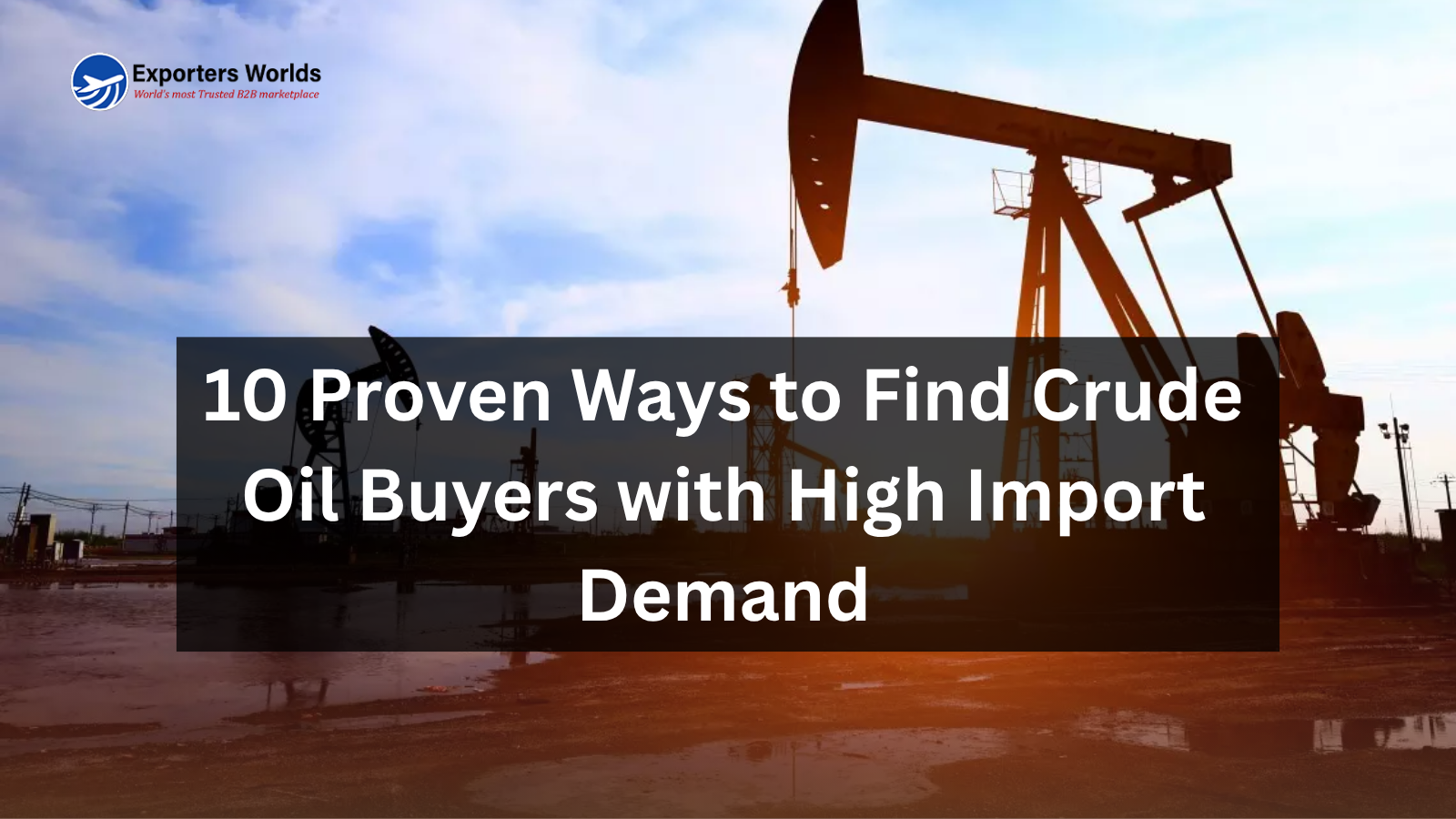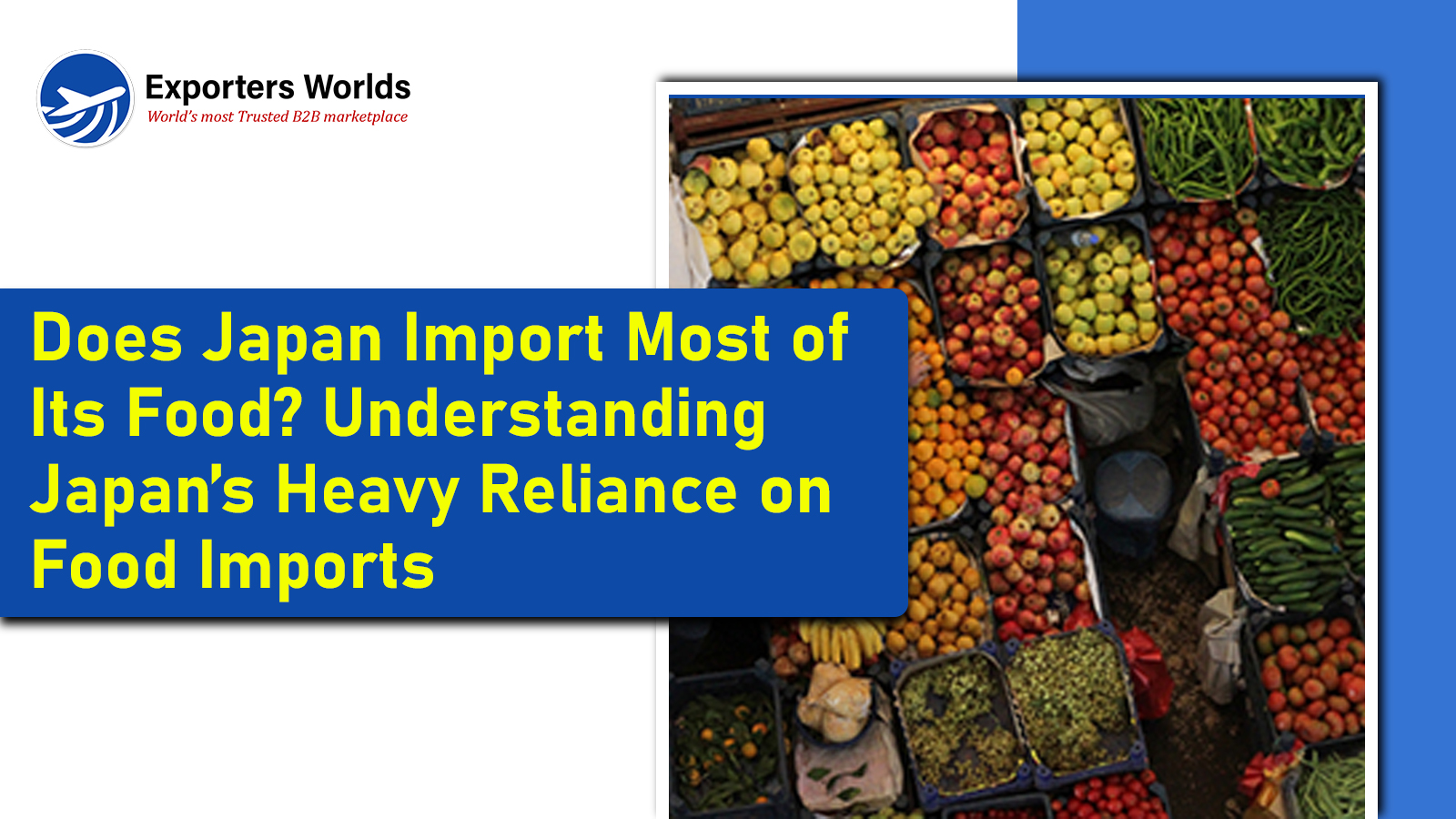10 Proven Ways to Find Crude Oil Buyers with High Import Demand

Introduction: The High-Stakes Hunt for Crude Oil Buyers
Crude oil buyers—those elusive, often misunderstood entities—aren’t just companies with barrels of money. They’re complex players: refineries under pressure to meet quotas, government-backed national oil corporations with rigid processes, and private importers juggling international regulations, sanctions, and logistics.
If you're a seller—an exporter, upstream producer, or even a broker—you already know this isn't a playground. It's a battlefield.
The real problem? The market is crawling with fake brokers, time-wasters, and unverifiable demand. Everyone’s promising to "have a buyer"—until you dig and find nothing but email chains leading nowhere.
So, what if you could cut through the fog and focus only on proven, high-demand crude oil importers—those with active terminals, past shipment records, and real urgency to buy?
Let’s not overcomplicate this. Below are 10 sharp, effective, no-nonsense methods that work. Not "might" work. Do work. Let’s get into it.
Method #1: Use B2B Trade Platforms—But Use Them Wisely
Yes, you’ve heard of Alibaba. Maybe you've dismissed it as a dumping ground. But here’s the twist—serious crude oil buyers & importers actually use these platforms, especially when they’re exploring new supplier regions.
Platforms like Global Sources, EC21, and TradeIndia have filters to show verified buyers, industry-specific categories, and buyer import histories. Use those.
Your seller profile matters. It should scream legitimacy:
-
Company registration docs
-
International certifications (ISO, SGS inspection, etc.)
-
Past export records
-
Contact info that’s not a Gmail account
You don’t want to look like a one-person WhatsApp hustle. Look like you mean business—because the real buyers do.
Method #2: Tap Into Government Trade Data & Customs Intelligence
You know what doesn’t lie? Shipping data.
Tools like Panjiva, ImportGenius, TradeMap, and Port Examiner offer something brokers don’t: hard trade evidence. These platforms track real transactions from customs data—down to the name of the importer, the quantity of barrels received, and the port they came through.
Here’s where it gets good:
India, China, South Korea, and the Netherlands consistently rank among the top crude oil importers globally. We're talking millions of barrels monthly.
Exporters who monitor this data get a competitive edge—they know who’s actively buying and when contracts expire. Why cold call blindly when you can reach out right after a shipment drops?
Method #3: Turn LinkedIn into a Buyer Discovery Engine
Forget cold DMs to vague profiles.
Try this search in LinkedIn:
"crude oil buyer" OR "petroleum procurement" AND (company name OR country)
Boom. You're staring at procurement heads, supply managers, and contract negotiators from actual companies that move actual volume.
LinkedIn lets you scan who’s active, who shares industry insights, and who’s engaging in procurement groups. That’s gold.
Don't pitch right away. Share a post. Comment insightfully. Drop a message offering a market report or asking about import preferences. You’ll go from cold outreach to warm credibility in one move.
Method #4: Show Up at Trade Shows Where Oil Buyers Gather
You know where the big dogs roam?
Events like ADIPEC in the UAE, OTC in Houston, Africa Oil Week, and Gastech.
Buyers, NOC reps, refiners, and even government energy teams attend these events looking for new sourcing options. Especially when their existing routes are delayed or too expensive.
Don't just exchange cards—build relationships. Ask, “What’s your toughest challenge in sourcing crude lately?” You’d be shocked how often that opens the door.
Then—follow up fast. Within 48 hours. With a crisp proposal. No generic PDFs.
Method #5: Work with Trusted International Trade Brokers
Sometimes, the right broker opens doors you didn’t know existed. But the wrong one? They’ll drain your time, funds, and reputation.
Good brokers:
-
Can name their buyer
-
Show past deals
-
Operate under a legally binding commission agreement
Bad brokers:
-
Use Gmail only
-
Can’t give company names
-
Promise 10 million barrels with zero documentation
Find brokers on trade forums, LinkedIn, or through referrals. But always verify them. Ask for mandate letters. Speak to previous suppliers. Cross-check everything.
Method #6: Advertise in Petroleum & Energy Journals Where Buyers Pay Attention
Buyers aren’t browsing Instagram. They’re reading Oil & Gas Journal, World Oil, and Petroleum Economist.
These journals have dedicated trade sections where credible exporters advertise supply capabilities, pricing windows, and available grades.
Your ad doesn’t need to scream “CHEAPEST!”
Instead, focus on logistics strength, consistent supply, quality testing, and transparent contracts. The serious buyers will notice—and respond.
Method #7: Register with National Oil Corporations (NOCs) & Track Government Tenders
Want to supply directly to a country?
Register with their NOC:
-
ONGC (India)
-
CNPC (China)
-
NNPC (Nigeria)
These entities buy in bulk—sometimes billions worth through tenders. Their procurement is rigorous but transparent.
Visit official websites, submit supplier documents, and watch for new tenders. It’s a slower game, but the contracts? They’re long-term and highly profitable.
Method #8: Buyer Lists—Valuable, but Only If Verified Properly
You’ll find plenty of websites selling “crude oil buyer lists.” Most are junk.
If you do access a list—from a trade chamber, past expo, or data portal—don’t email blindly. Instead:
-
Google the company
-
Cross-check on LinkedIn
-
Look for shipment history in customs data
Then, plug them into a simple CRM system (even Excel works). Track who opened, who replied, and who needs a follow-up.
The goal? Build an outreach engine—not a spam machine.
Method #9: High-Impact Cold Outreach That Gets Responses
Cold emails still work—but only when they sound like you understand the buyer’s world.
Try this structure:
Hi [Name],
I noticed your company’s recent shipments via [Port/Country], and thought it’s worth exploring a supply line from [Your Country].
We specialize in [crude type], offer [pricing model], and currently supply to [region].
Let me know if this fits your Q3/Q4 needs—happy to share specs.
Attach docs—don’t promise them. Show up like a partner, not a desperate seller.
Method #10: Build Long-Term Trade Relations in Crude Importing Powerhouses
This is where smart exporters win.
India, China, South Korea, and the Netherlands aren’t just top crude oil importers—they’re recurring buyers with structured procurement pipelines.
Here’s the secret sauce:
Hire local trade reps, work with embassies, connect through binational chambers of commerce. Relationships matter. The deeper the trust, the longer the contract.
One Ghanaian supplier built a 6-year pipeline by consistently visiting India, attending forums, and simply showing up—even when no deal was immediate.
Bonus Tip: Compliance Isn’t Optional—It’s a Dealbreaker
In 2025, this isn't a “nice-to-follow” point—it’s mission-critical.
If you're supplying crude, you must:
-
Run KYC on buyers and intermediaries
-
Screen your deal against OFAC and EU sanctions lists
-
Use secure payment methods: LC (Letter of Credit), escrow, or at minimum a verified trade guarantee
Lose your license over a sanction breach and you’re out—fast.
Conclusion: Finding the Right Crude Oil Buyers Takes Strategy, Not Luck
This industry doesn't reward noise. It rewards precision.
If you’re serious about supplying crude, stop mass messaging and start mastering these proven tactics.
Each method is a step closer to verified crude oil buyers & importers—people who aren't just interested, but importing millions of barrels right now.
And if you want that journey to be faster, smoother, and infinitely more credible—Exporters Worlds can accelerate the process. From verified lead databases to professionally designed trade profiles, it's where exporters meet real importers. Not leads. Not guesses. Buyers.
Want more strategies like this?
Subscribe to get updates on trade intelligence tools, verified buyer lists, and industry-specific pitch templates.
Found this helpful? Share it with your trade circle. Let’s build better deals—one smart move at a time.




